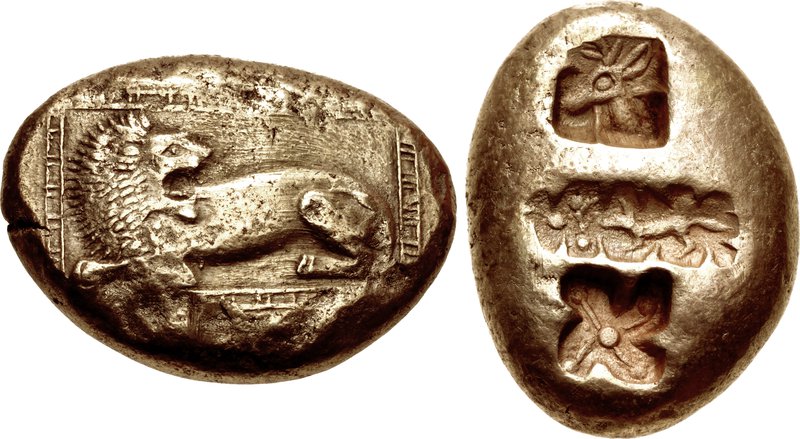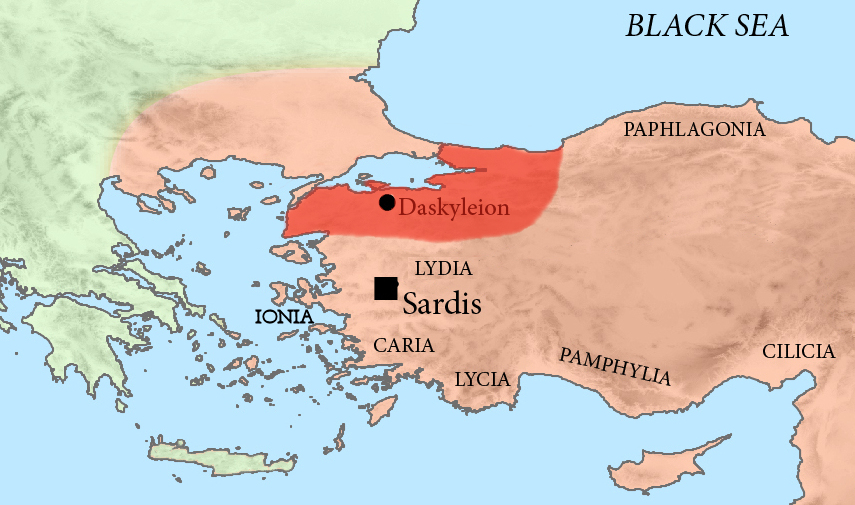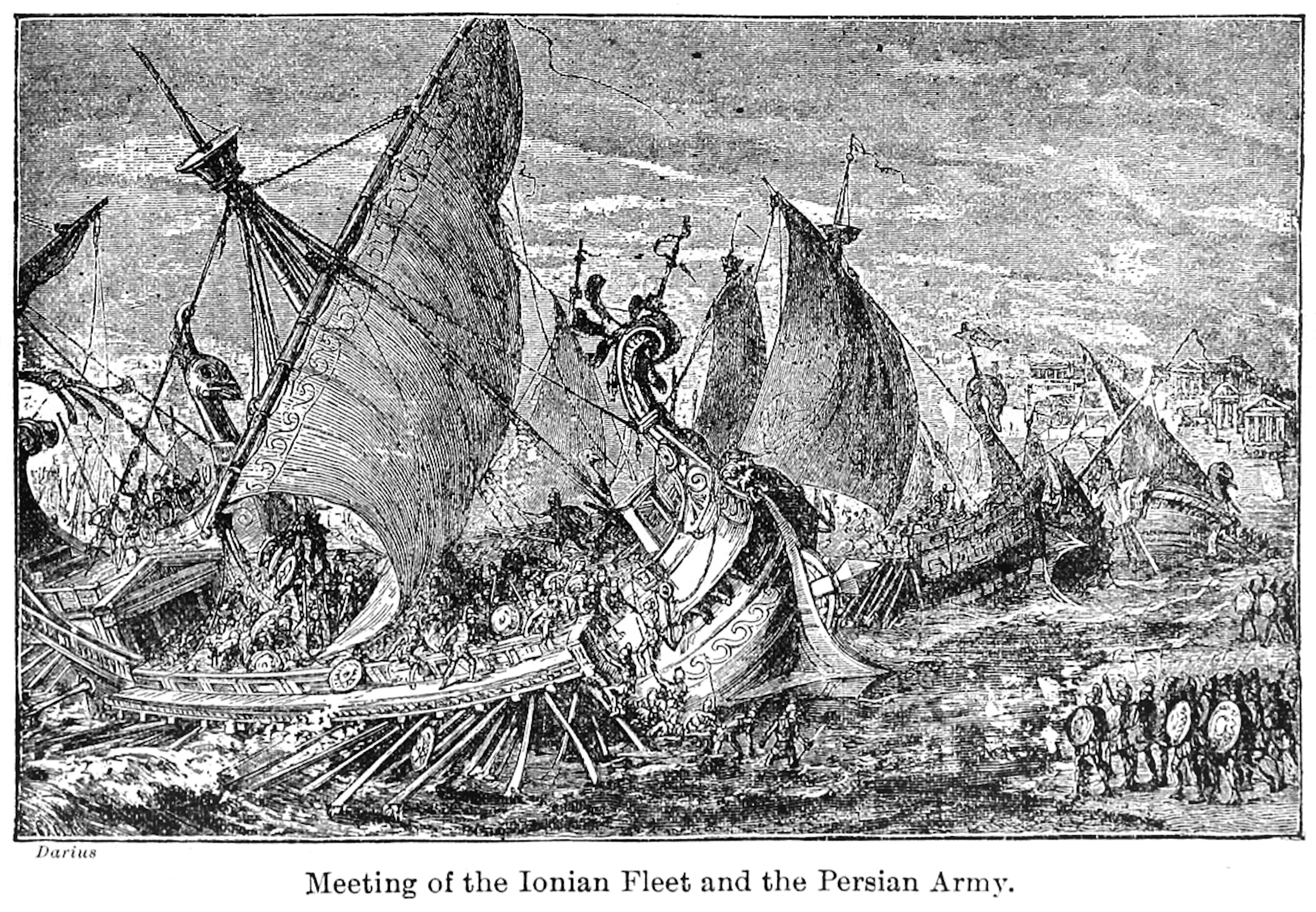|
Histiaeus
Histiaeus (, died 493 BC), the son of Lysagoras, was a Greek ruler of Miletus in the late 6th century BC. Histiaeus was tyrant of Miletus under Darius I, king of Achaemenid Empire, Persia, who had subjugated Miletus and the other Ionian states in Asia Minor, and who generally appointed Greeks as tyrants to rule the Greek cities of Ionia in his territory. Scythian campaign of Darius I (circa 513 BC) According to Herodotus,Herodotus. (2003). "Histories (Herodotus), The Histories, Book 5." Trans. Aubrey De Selincourt. Rev. John Marincola. London: Penguin Group. Histiaeus, along with the other Chiefs/Tyrants under Darius' rule, took part in the European Scythian campaign of Darius I, Persian expedition against the Scythians, and was put in charge of defending the bridge that Darius' troops had placed across the Danube River. The Scythians attempted to persuade Histiaeus and the others to abandon the bridge; one faction, led by Miltiades the Younger, Miltiades of Athens, at ... [...More Info...] [...Related Items...] OR: [Wikipedia] [Google] [Baidu] |
Ionian Revolt
The Ionian Revolt, and associated revolts in Aeolis, Doris, Cyprus and Caria, were military rebellions by several Greek regions of Asia Minor against Persian rule, lasting from 499 BC to 493 BC. At the heart of the rebellion was the dissatisfaction of the Greek cities of Asia Minor with the tyrants appointed by Persia to rule them, along with the individual actions of two Milesian tyrants, Histiaeus and Aristagoras. The cities of Ionia had been conquered by Persia around 540 BC, and thereafter were ruled by native tyrants, nominated by the Persian satrap in Sardis. In 499 BC, the tyrant of Miletus, Aristagoras, launched a joint expedition with the Persian satrap Artaphernes to conquer Naxos, in an attempt to bolster his position. The mission was a debacle, and sensing his imminent removal as tyrant, Aristagoras chose to incite the whole of Ionia into rebellion against the Persian king Darius the Great. In 498 BC, supported by troops from Athens and Eretria, the Ionians marched ... [...More Info...] [...Related Items...] OR: [Wikipedia] [Google] [Baidu] |
Aristagoras
Aristagoras ( grc-gre, Ἀρισταγόρας ὁ Μιλήσιος), d. 497/496 BC, was the leader of the Ionian city of Miletus in the late 6th century BC and early 5th century BC and a key player during the early years of the Ionian Revolt against the Persian Achaemenid Empire. He was the son-in-law of Histiaeus, and inherited the tyranny of Miletus from him. The Greeks had won the coast of Asia Minor from the preceding Hittite Empire during the Bronze Age, and thanks to their victory at Troy had kept it during the fall of the empire and retirement of the Hittites to Syria. They shared the coast with the Phrygians (proto-Armenians) coming in from the Balkans, but neither were prepared for the mass emigration of Iranians from the plains of Asia. Ionia appealed to the mainland Greeks for assistance and not receiving it were forced to capitulate, becoming subjects of the new Achaemenid Empire. As long as they paid their taxes and were no threat to the rule of the Persians, the l ... [...More Info...] [...Related Items...] OR: [Wikipedia] [Google] [Baidu] |
Megabazus
Megabazus (Old Persian: ''Bagavazdā'' or ''Bagabāzu'', grc, Μεγαβάζος), son of Megabates, was a highly regarded Persian general under Darius, to whom he was a first-degree cousin. Most of the information about Megabazus comes from '' The Histories'' by Herodotus. Scythian campaign (513 BC) Megabazus led the army of the Persian King Darius I in 513 BC during his European Scythian campaign. After this had to be discontinued without result, Megabazos was left as commander-in-chief of an 80,000-man army in Europe, with the mission of subjugating the Greek cities on the Hellespont. The Persian troops first subjugated gold-rich Thrace after capturing Perinthos and the coastal Greek cities, and then defeated the powerful Paeonians, many of whom he deported to Phrygia. Subjugation of Macedon Finally, Megabazus sent envoys to Amyntas I, king of Macedon, demanding acceptance of Persian domination, which the king accepted. Megabazus received the present of "Earth and Wate ... [...More Info...] [...Related Items...] OR: [Wikipedia] [Google] [Baidu] |
Histories (Herodotus)
The ''Histories'' ( el, Ἱστορίαι, ; also known as ''The History'') of Herodotus is considered the founding work of history in Western literature. Written around 430 BC in the Ionic dialect of classical Greek, ''The Histories'' serves as a record of the ancient traditions, politics, geography, and clashes of various cultures that were known in Greece, Western Asia and Northern Africa at that time. Although not a fully impartial record, it remains one of the West's most important sources regarding these affairs. Moreover, it established the genre and study of history in the Western world (despite the existence of historical records and chronicles beforehand). ''The'' ''Histories'' also stands as one of the earliest accounts of the rise of the Persian Empire, as well as the events and causes of the Greco-Persian Wars between the Persian Empire and the Greek city-states in the 5th century BC. Herodotus portrays the conflict as one between the forces of slavery (the Pers ... [...More Info...] [...Related Items...] OR: [Wikipedia] [Google] [Baidu] |
Thracian Chersonese
The Thracians (; grc, Θρᾷκες ''Thrāikes''; la, Thraci) were an Indo-European speaking people who inhabited large parts of Eastern and Southeastern Europe in ancient history.. "The Thracians were an Indo-European people who occupied the area between northern Greece, southern Russia, and north-western Turkey. They shared the same language and culture... There may have been as many as a million Thracians, diveded among up to 40 tribes." Thracians resided mainly in the Balkans (mostly modern day Bulgaria, Turkey and Greece) but were also located in Anatolia (Asia Minor) and other locations in Eastern Europe. The exact origin of Thracians is unknown, but it is believed that proto-Thracians descended from a purported mixture of Proto-Indo-Europeans and Early European Farmers, arriving from the rest of Asia and Africa through the Asia Minor (Anatolia). The proto-Thracian culture developed into the Dacian, Getae, and several other smaller Thracian cultures. Thracian cult ... [...More Info...] [...Related Items...] OR: [Wikipedia] [Google] [Baidu] |
European Scythian Campaign Of Darius I
The Scythian campaign of Darius I was a military expedition into parts of European Scythia by Darius I, the king of the Achaemenid Empire, in 513 BC. The Scythians were an East Iranian-speaking people who had invaded Media, revolted against Darius and threatened to disrupt trade between Central Asia and the shores of the Black Sea as they lived between the Danube and Don Rivers and the Black Sea. The campaigns took place in parts of what is now the Balkans, Ukraine, and southern Russia. The Scythians managed to avoid a direct confrontation with the Persian army due to their mobile lifestyle and lack of any settlement (except Gelonus), while the Persians suffered losses due to the Scythians' scorched earth tactic. However, the Persians conquered much of their cultivated lands and damaged their allies, forcing the Scythians to respect the Persian force. Darius halted the advance to consolidate his gains, and built a defence line. The campaign Darius crossed the Black Sea at the B ... [...More Info...] [...Related Items...] OR: [Wikipedia] [Google] [Baidu] |
Miletus
Miletus (; gr, Μῑ́λητος, Mī́lētos; Hittite transcription ''Millawanda'' or ''Milawata'' (exonyms); la, Mīlētus; tr, Milet) was an ancient Greek city on the western coast of Anatolia, near the mouth of the Maeander River in ancient Ionia. Its ruins are located near the modern village of Balat in Aydın Province, Turkey. Before the Persian rule that started in the 6th century BC, Miletus was considered among the greatest and wealthiest of Greek cities. Evidence of first settlement at the site has been made inaccessible by the rise of sea level and deposition of sediments from the Maeander. The first available evidence is of the Neolithic. In the early and middle Bronze Age the settlement came under Minoan influence. Legend has it that an influx of Cretans occurred displacing the indigenous Leleges, and the site was renamed Miletus after a place in Crete. Recorded history at Miletus begins with the records of the Hittite Empire, and the Mycenaean records of ... [...More Info...] [...Related Items...] OR: [Wikipedia] [Google] [Baidu] |
Amphipolis
Amphipolis ( ell, Αμφίπολη, translit=Amfipoli; grc, Ἀμφίπολις, translit=Amphipolis) is a municipality in the Serres (regional unit), Serres regional unit, Macedonia (Greece), Macedonia, Greece. The seat of the municipality is Rodolivos. It was an important ancient Greek Polis, polis (city), and later a Roman city, whose large remains can still be seen. Amphipolis was originally a Colonies in antiquity, colony of ancient Athenians and was the site of the Battle of Amphipolis, battle between the Spartans and Athenians in 422 BC. It was later the place where Alexander the Great prepared for campaigns leading to his invasion of Asia in 335 BC. Alexander's three finest admirals, Nearchus, Androsthenes of Thasos, Androsthenes and Laomedon of Mytilene, Laomedon, resided in Amphipolis. After Alexander's death, his wife Roxana and their son Alexander IV of Macedon, Alexander IV were imprisoned and murdered in 311 BC. Excavations in and around the city have revealed im ... [...More Info...] [...Related Items...] OR: [Wikipedia] [Google] [Baidu] |
Steganography
Steganography ( ) is the practice of representing information within another message or physical object, in such a manner that the presence of the information is not evident to human inspection. In computing/electronic contexts, a computer file, message, image, or video is concealed within another file, message, image, or video. The word ''steganography'' comes from Greek ''steganographia'', which combines the words ''steganós'' (), meaning "covered or concealed", and ''-graphia'' () meaning "writing". The first recorded use of the term was in 1499 by Johannes Trithemius in his '' Steganographia'', a treatise on cryptography and steganography, disguised as a book on magic. Generally, the hidden messages appear to be (or to be part of) something else: images, articles, shopping lists, or some other cover text. For example, the hidden message may be in invisible ink between the visible lines of a private letter. Some implementations of steganography that lack a shared secret are f ... [...More Info...] [...Related Items...] OR: [Wikipedia] [Google] [Baidu] |
Ionia
Ionia () was an ancient region on the western coast of Anatolia, to the south of present-day Izmir. It consisted of the northernmost territories of the Ionian League of Greek settlements. Never a unified state, it was named after the Ionian tribe who had settled in the region before the Archaic period. Ionia proper comprised a narrow coastal strip from Phocaea in the north near the mouth of the river Hermus (now the Gediz), to Miletus in the south near the mouth of the river Maeander, and included the islands of Chios and Samos. It was bounded by Aeolia to the north, Lydia to the east and Caria to the south. The cities within the region figured large in the strife between the Persian Empire and the Greeks. Ionian cities were identified by mythic traditions of kinship and by their use of the Ionic dialect, but there was a core group of twelve Ionian cities who formed the Ionian League and had a shared sanctuary and festival at Panionion. These twelve cities were (from ... [...More Info...] [...Related Items...] OR: [Wikipedia] [Google] [Baidu] |
Achaemenid Empire
The Achaemenid Empire or Achaemenian Empire (; peo, 𐎧𐏁𐏂, , ), also called the First Persian Empire, was an ancient Iranian empire founded by Cyrus the Great in 550 BC. Based in Western Asia, it was contemporarily the largest empire in history, spanning a total of from the Balkans and Egypt in the west to Central Asia and the Indus Valley in the east. Around the 7th century BC, the region of Persis in the southwestern portion of the Iranian plateau was settled by the Persians. From Persis, Cyrus rose and defeated the Median Empire as well as Lydia and the Neo-Babylonian Empire, marking the formal establishment of a new imperial polity under the Achaemenid dynasty. In the modern era, the Achaemenid Empire has been recognized for its imposition of a successful model of centralized, bureaucratic administration; its multicultural policy; building complex infrastructure, such as road systems and an organized postal system; the use of official languages across ... [...More Info...] [...Related Items...] OR: [Wikipedia] [Google] [Baidu] |
Naxos, Greece
Naxos (; el, Νάξος, ) is a Greek island and the largest of the Cyclades. It was the centre of archaic Cycladic culture. The island is famous as a source of emery, a rock rich in corundum, which until modern times was one of the best abrasives available. The largest town and capital of the island is Chora or Naxos City, with 7,374 inhabitants (2011 census). The main villages are Filoti, Apiranthos, Vivlos, Agios Arsenios, Koronos and Glynado. Geography Climate Naxos experiences a Mediterranean climate, with relatively mild winters and warm summers. The Köppen Climate Classification subtype for this climate is "Csa". (Mediterranean Climate). Inland areas of the island are much wetter and cooler in winter. Mythic Naxos According to Greek mythology, the young Zeus was raised in a cave on Mt. Zas ("''Zas''" meaning "''Zeus''"). Homer mentions " Dia"; literally the sacred island "of the Goddess". Károly Kerényi explains: One legend has it that in the ... [...More Info...] [...Related Items...] OR: [Wikipedia] [Google] [Baidu] |










